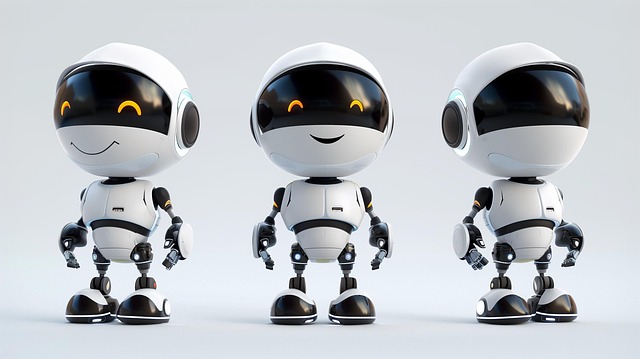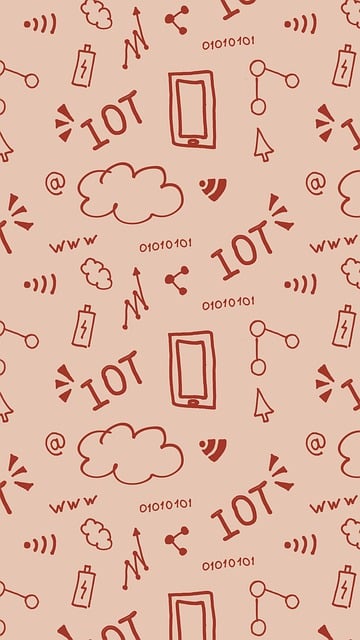Shopify AI chatbots revolutionize customer service with instant 24/7 support, using AI & NLP for query understanding, product recommendations, and simple transactions. They automate routine tasks, freeing human agents for complex issues, leading to improved efficiency and higher customer satisfaction. By integrating platforms like Dialogflow or IBM Watson, feeding diverse datasets, setting performance goals, and refining algorithms based on analytics, these bots continuously learn and enhance their effectiveness. Measuring KPIs like satisfaction ratings, response times, and agent workload reveals the chatbot's impact on driving sales and optimizing e-commerce processes over time.
“Unleash the power of artificial intelligence (AI) to elevate your Shopify store’s customer service with an efficient and effective AI chatbot. This comprehensive guide explores the world of Shopify AI chatbots, from their benefits and features to a step-by-step implementation process.
We’ll navigate best practices for training and optimizing these digital assistants, ensuring seamless interactions with your customers. Additionally, discover how to measure success and evaluate the impact of integrating an AI chatbot into your Shopify ecosystem.”
- Understanding Shopify AI Chatbots: Benefits and Features
- Implementing a Shopify Customer Service Bot: A Step-by-Step Guide
- Best Practices for Training and Optimizing Your Shopify Chatbot
- Measuring Success: Evaluating the Impact of a Shopify AI Chatbot
Understanding Shopify AI Chatbots: Benefits and Features

Shopify AI chatbots are revolutionizing customer service by providing instant, 24/7 support to online store visitors. These intelligent bots use artificial intelligence and natural language processing (NLP) to understand customer queries, offer relevant product recommendations, and even handle simple transactions. By automating routine tasks, Shopify AI chatbots free up human agents to focus on more complex issues, leading to improved efficiency and higher customer satisfaction.
Beyond cost savings and round-the-clock availability, Shopify AI chatbots boast several key features. They can personalize interactions based on customer history, provide product suggestions tailored to individual preferences, and seamlessly integrate with existing Shopify store functionality. Additionally, these bots learn from each interaction, continually improving their performance and ability to assist customers effectively. This ongoing evolution ensures that Shopify AI chatbots remain a powerful tool for enhancing the overall online shopping experience.
Implementing a Shopify Customer Service Bot: A Step-by-Step Guide

Implementing a shopify ai chatbot is a strategic move to elevate your customer service game and boost sales. Here’s a step-by-step guide to help you navigate this process smoothly:
1. Choose a Suitable Platform: With numerous options available, research and select an AI chatbot platform that seamlessly integrates with Shopify. Look for features like natural language processing (NLP), multi-language support, and 24/7 availability. Popular choices include Dialogflow, IBM Watson, and LiveChat, all of which offer robust solutions tailored for e-commerce platforms.
2. Design Chatbot Conversations: Crafting meaningful interactions is key to a successful chatbot experience. Map out potential customer queries and design relevant conversations. Consider common inquiries about product details, order tracking, returns, and shipping. Use branching logic to create conversational flows that guide users to the right information or appropriate human assistance when needed.
3. Train and Test: Feed your chatbot with relevant data from your Shopify store, including product descriptions, FAQs, and customer interactions. Train the AI model using this data to ensure accurate responses. Thoroughly test the chatbot across various scenarios to identify and rectify any gaps in its knowledge base.
4. Integrate with Shopify: Once trained and tested, seamlessly integrate your chosen AI chatbot platform into your Shopify store. This process typically involves installing an app or embedding a snippet of code provided by the platform. Ensure proper configuration for smooth interaction between your store and the chatbot.
5. Launch and Monitor: Go live with your shopify ai chatbot and monitor its performance closely. Analyze customer feedback, response accuracy, and resolution rates. Continuously refine and improve the chatbot’s capabilities based on user interactions to enhance its effectiveness over time.
Best Practices for Training and Optimizing Your Shopify Chatbot

Training and optimizing your Shopify AI chatbot is key to enhancing customer experience and driving sales. Start by feeding the chatbot with a diverse dataset relevant to your store, including frequently asked questions, product descriptions, and customer reviews. This enables the AI to understand the unique language used in your industry and provide more accurate responses. Regularly review and update this dataset to keep up with changing trends and customer queries.
Next, set clear goals for your chatbot’s performance, such as reducing response times or increasing customer satisfaction ratings. Use analytics tools provided by Shopify to monitor the chatbot’s performance against these goals. Based on insights gathered, continually refine the chatbot’s training data and algorithms to improve its accuracy and effectiveness in handling customer interactions.
Measuring Success: Evaluating the Impact of a Shopify AI Chatbot

Measuring the success of a Shopify AI chatbot is crucial to understanding its impact and value to your business. Success can be evaluated through various metrics, such as customer satisfaction ratings, response time improvements, and the reduction in human agent workload. By tracking these key performance indicators (KPIs), you gain insights into how effectively the chatbot handles customer inquiries, provides accurate information, and offloads tasks from human support staff.
For instance, a Shopify AI chatbot can significantly enhance customer experience by offering instant responses to frequently asked questions, reducing wait times, and providing 24/7 availability. These improvements contribute to higher customer satisfaction and retention rates. Additionally, the chatbot’s ability to learn and adapt based on customer interactions ensures that it becomes increasingly accurate and efficient over time, further optimizing your e-commerce operations.
Shopify AI chatbots are transforming customer service by providing instant, personalized support 24/7. Through understanding their benefits, implementing them strategically, and continually optimizing performance, businesses can enhance customer satisfaction, reduce response times, and drive growth. By measuring key metrics, you can ensure your Shopify ai chatbot is living up to its potential as a powerful tool in your e-commerce arsenal.
